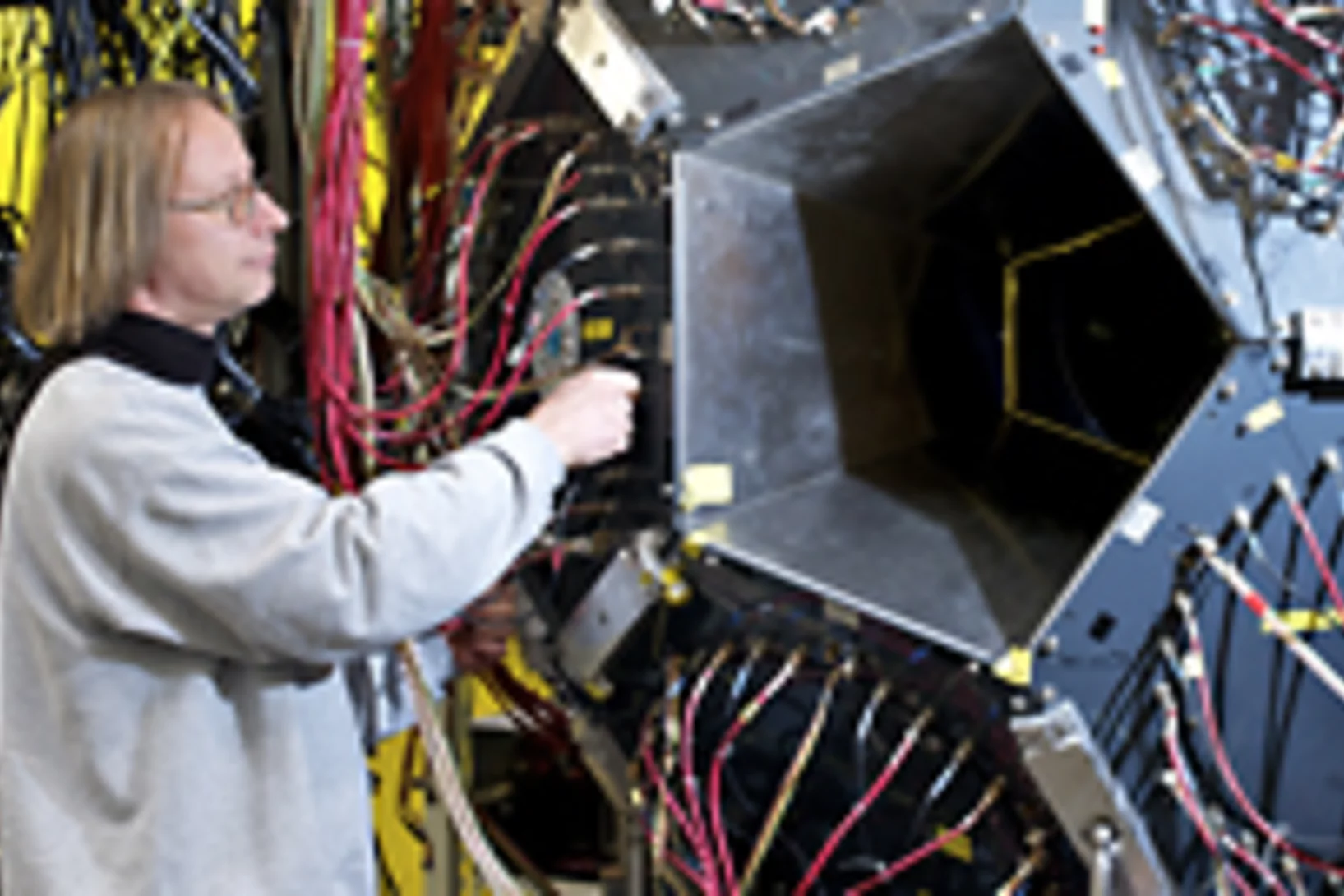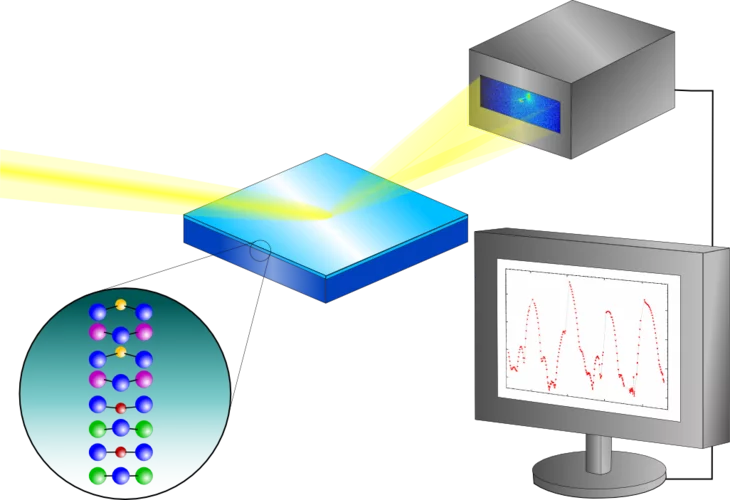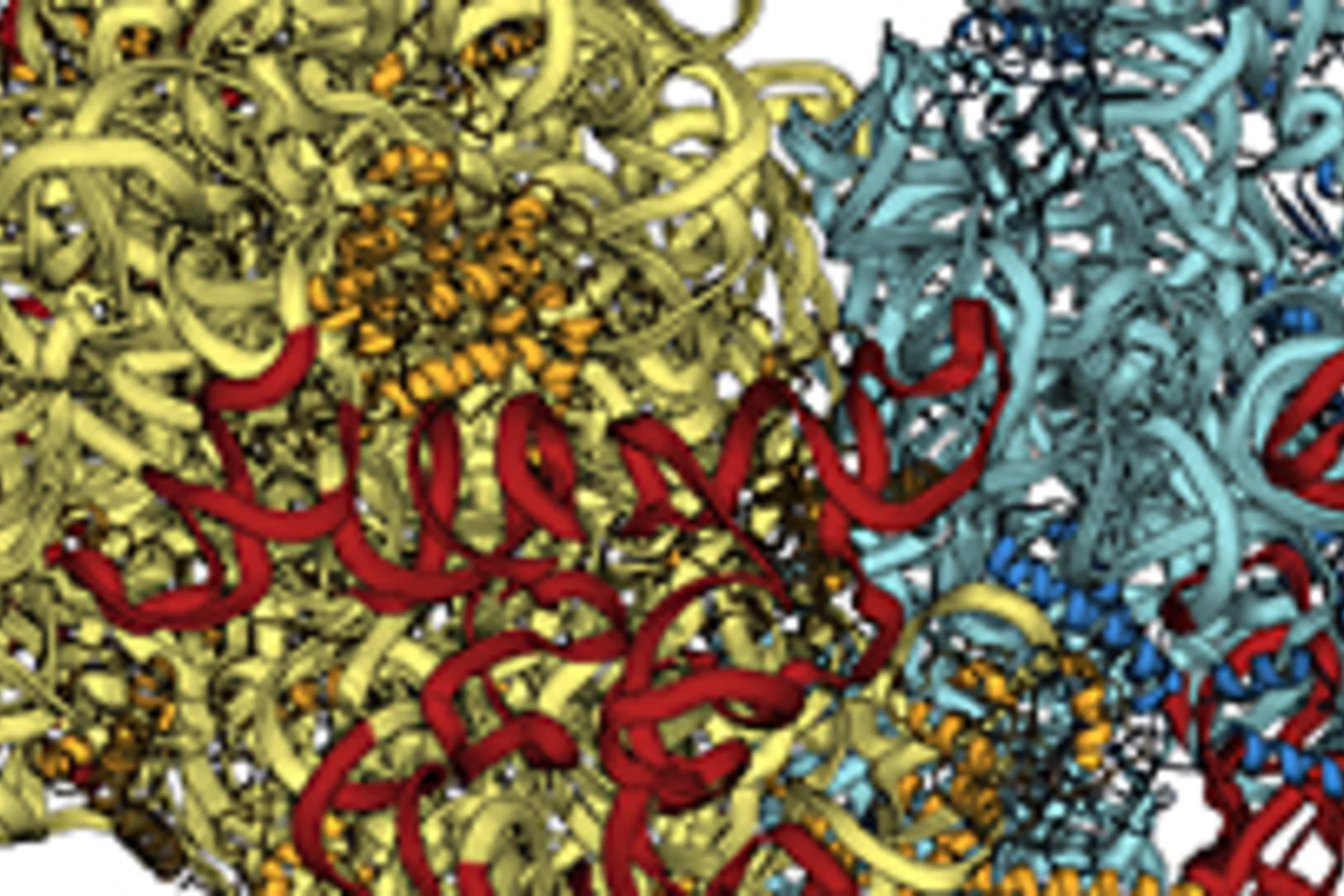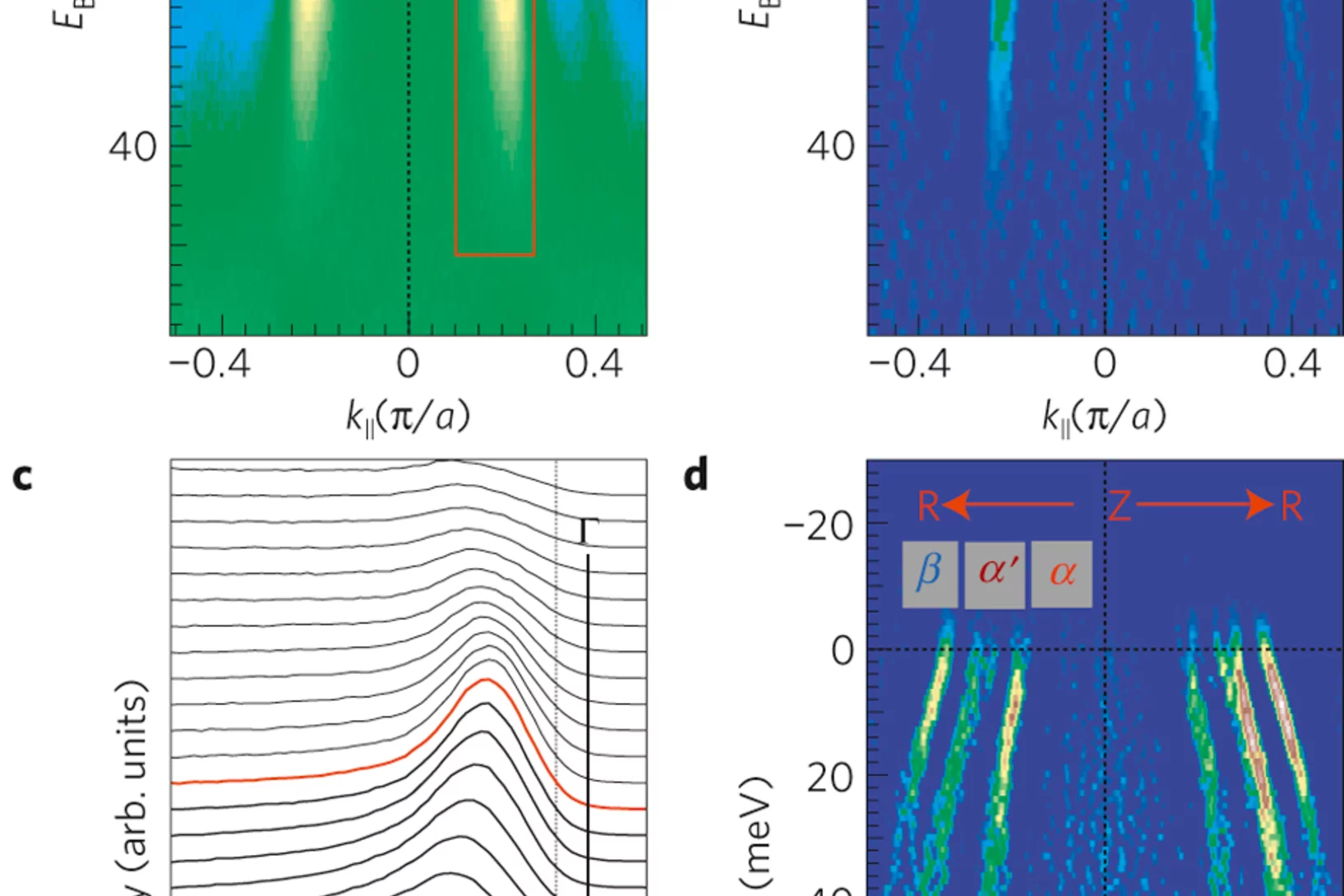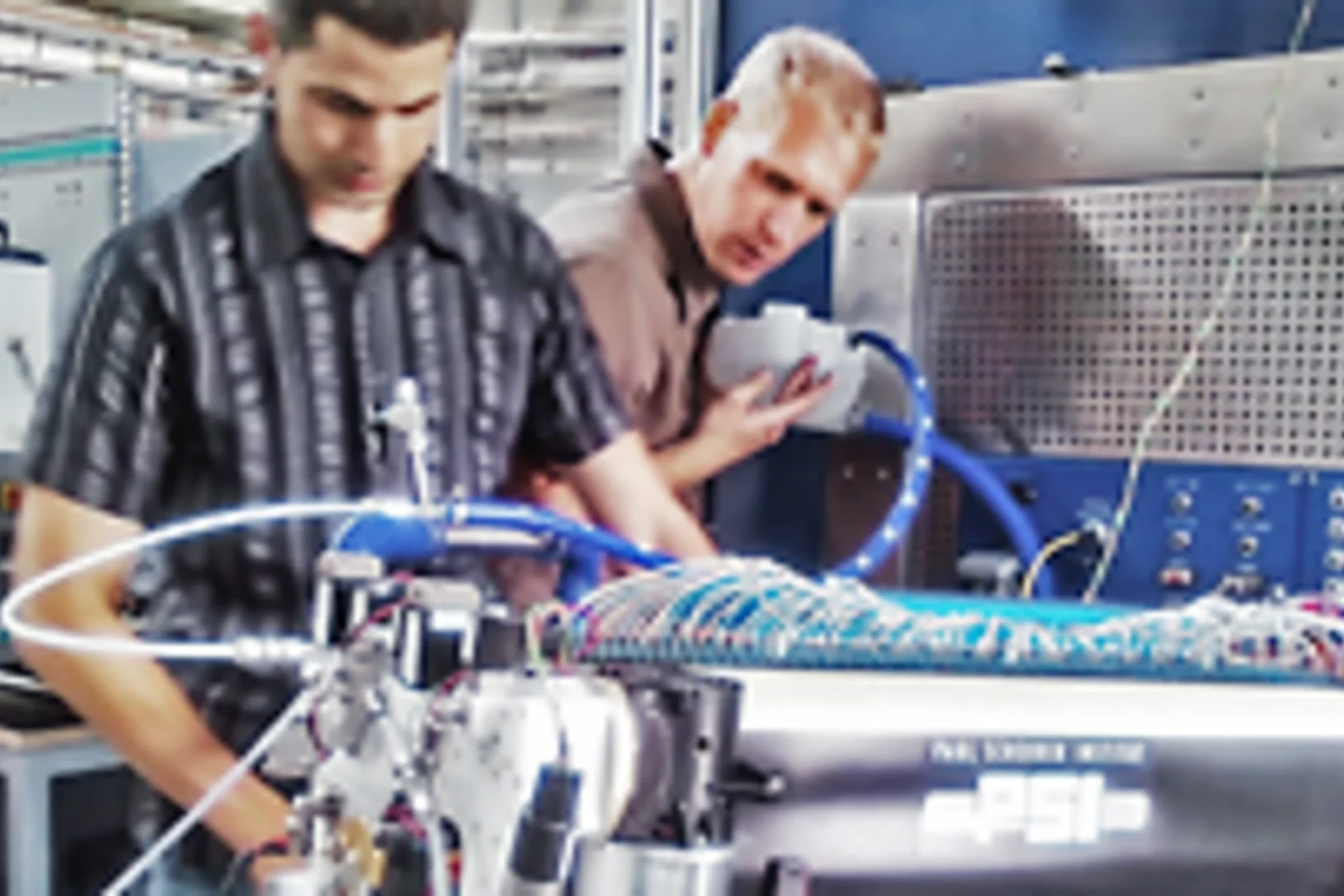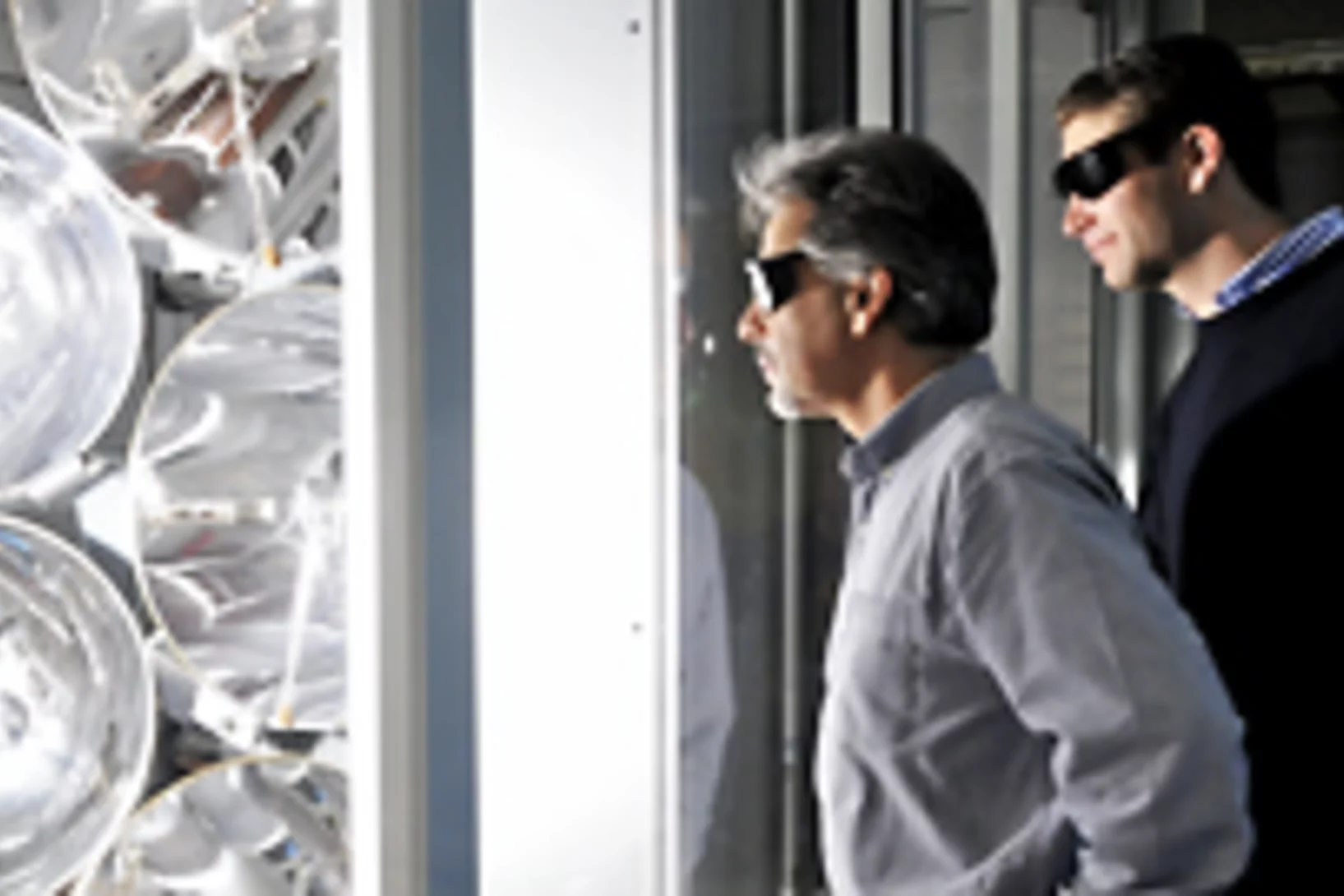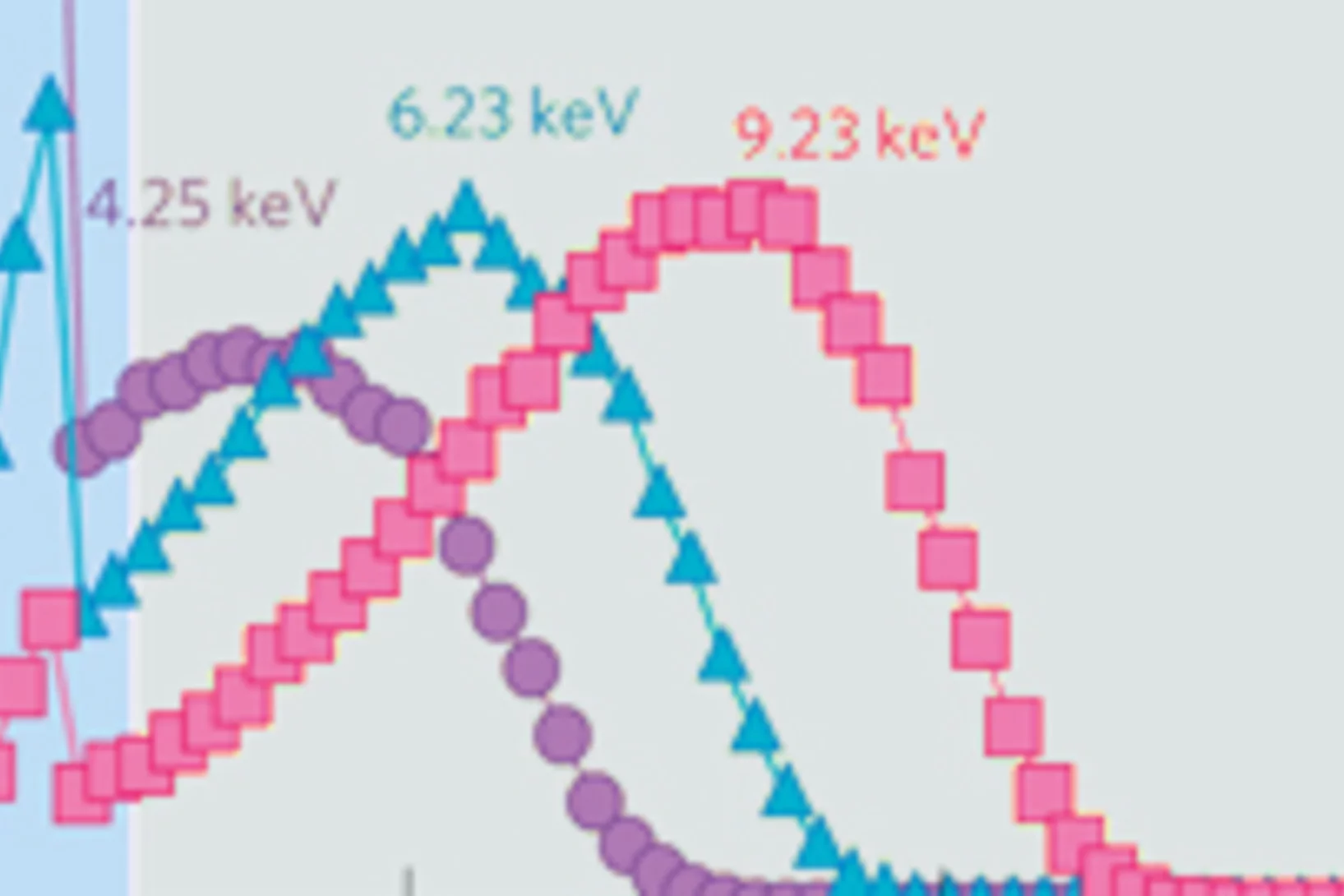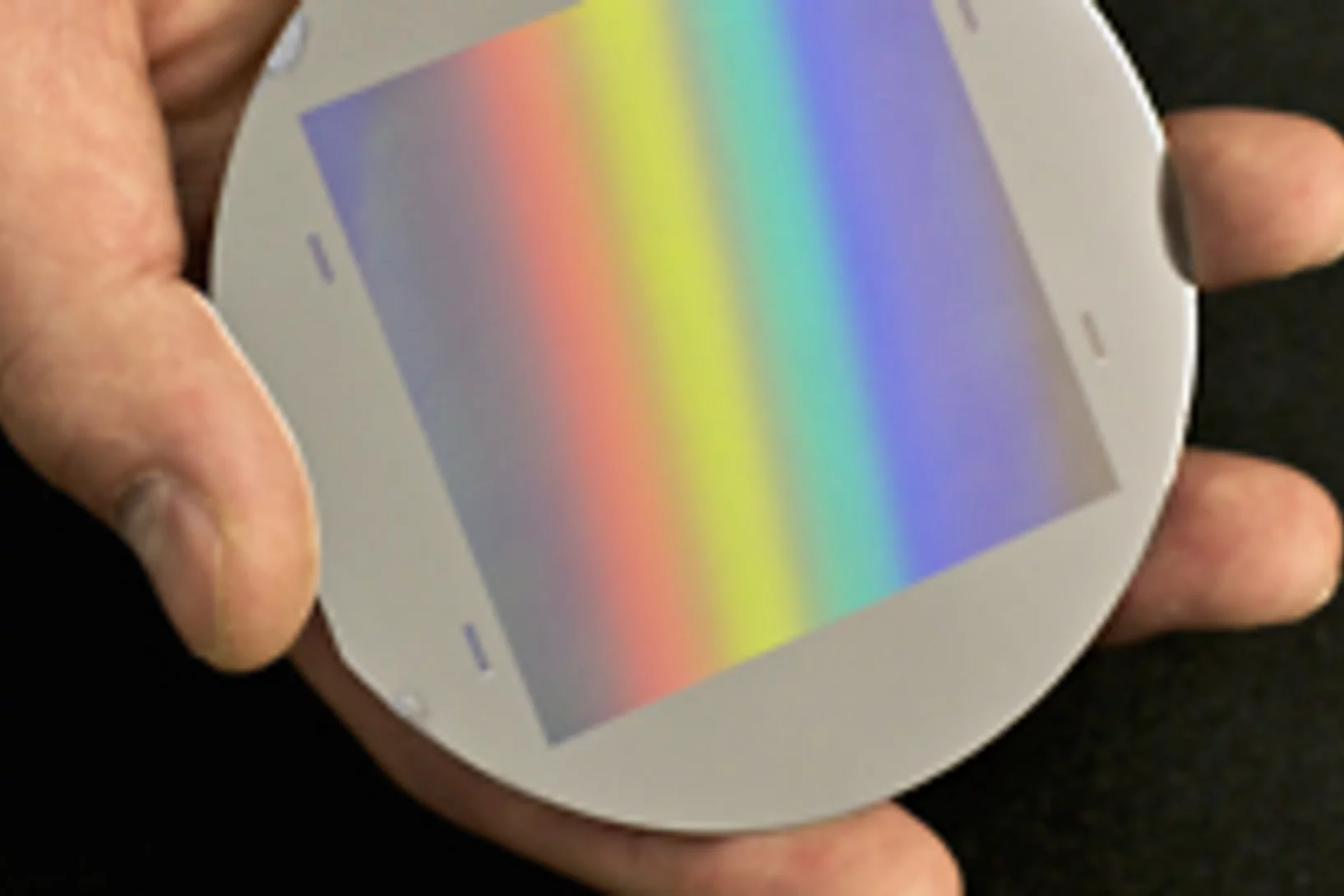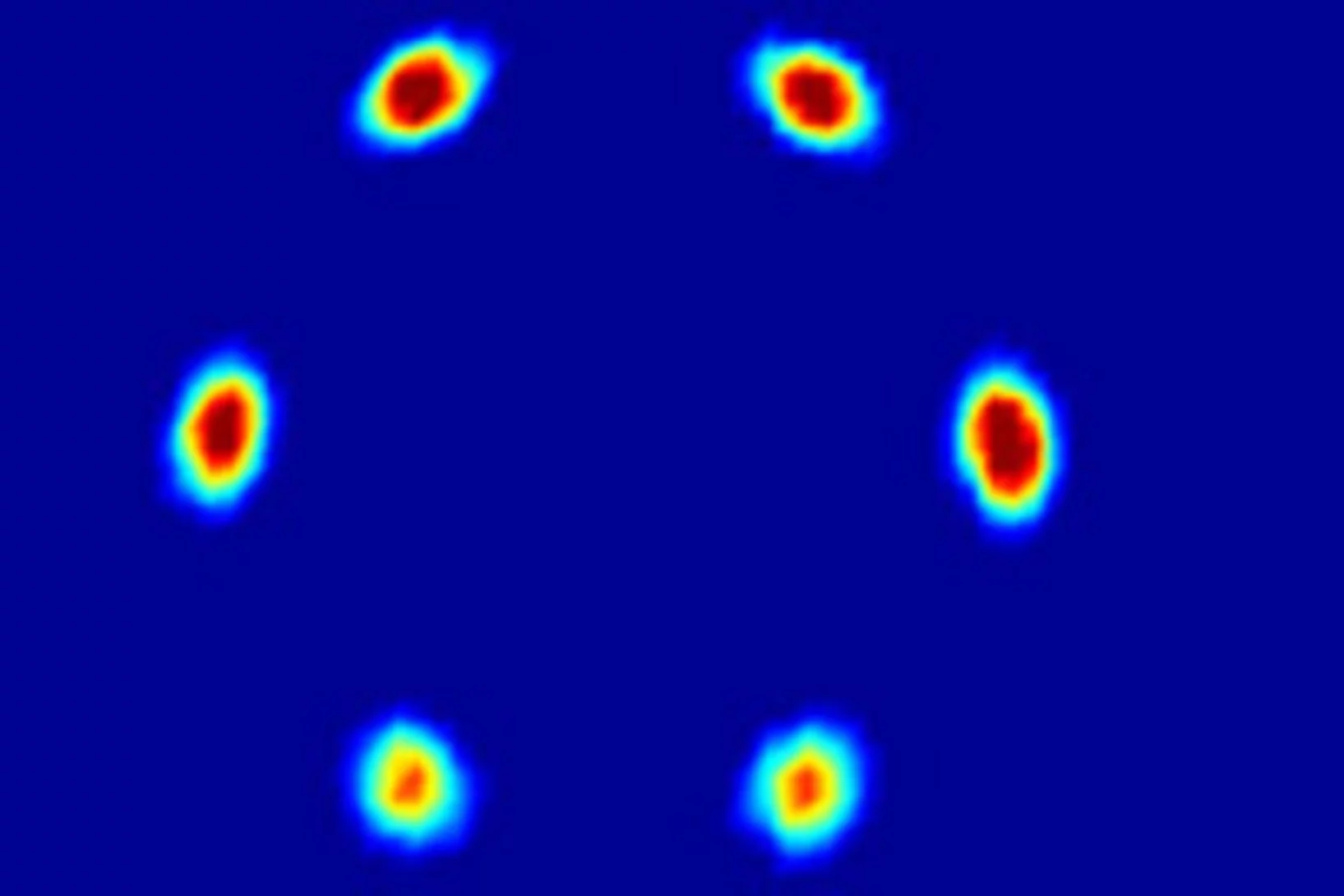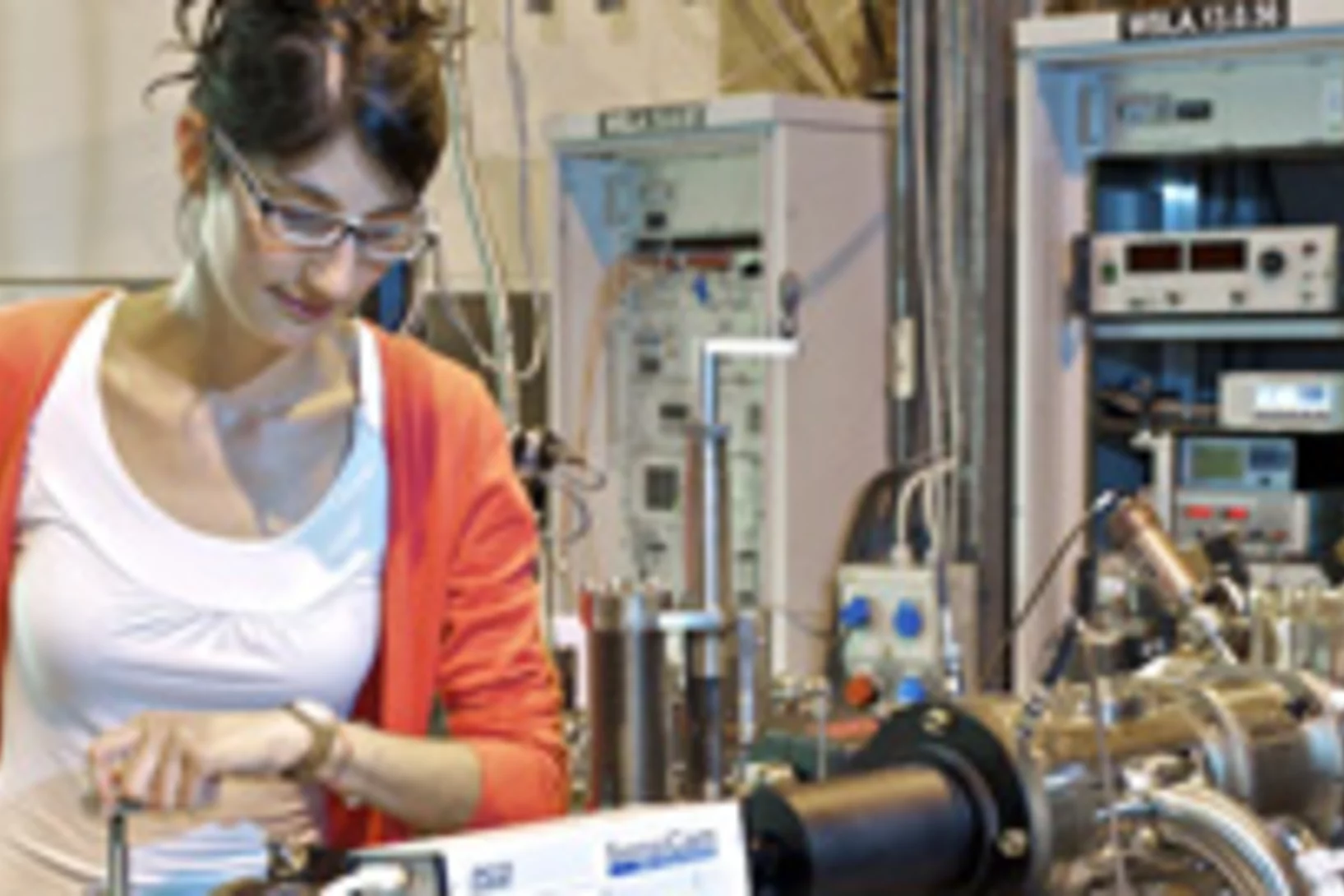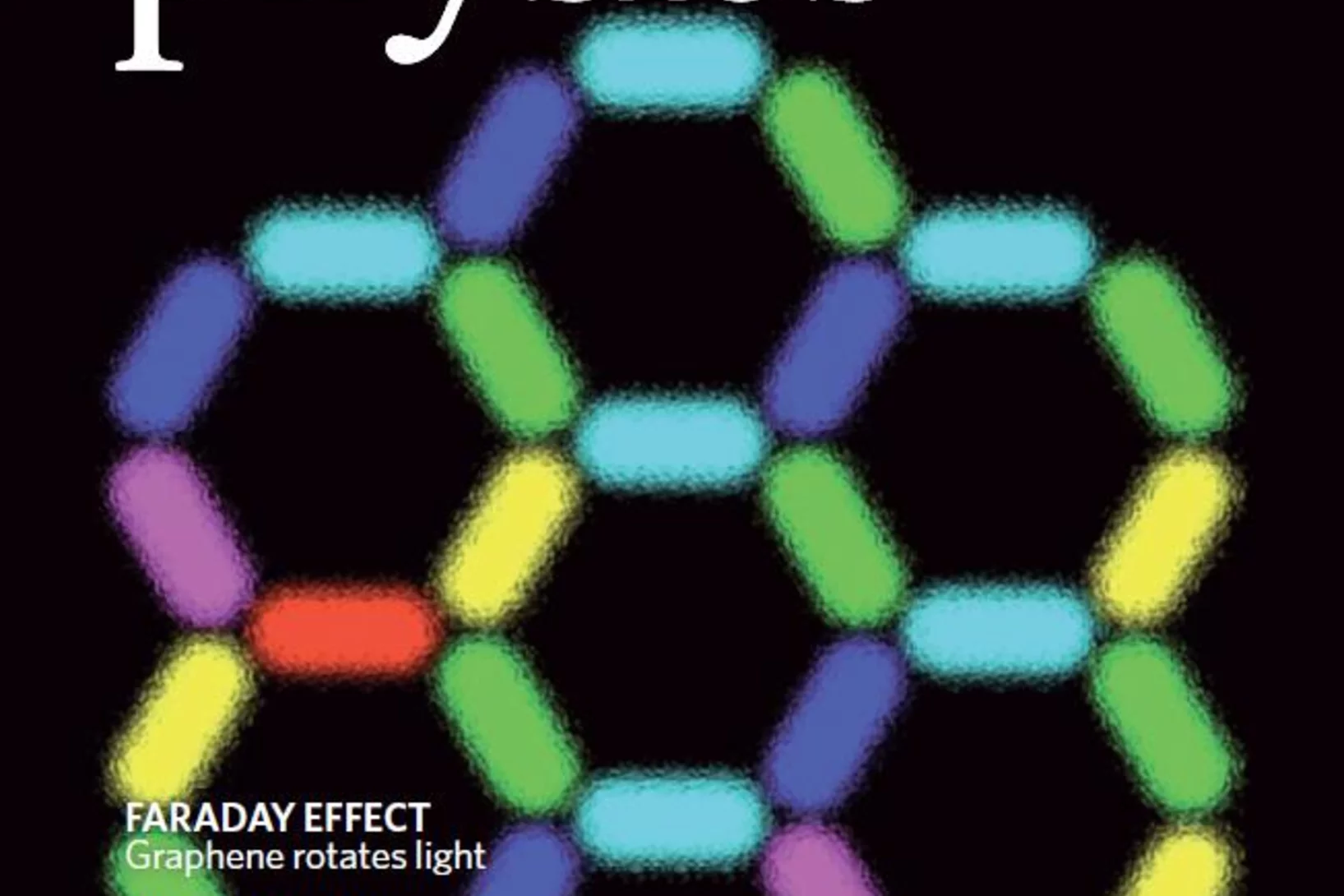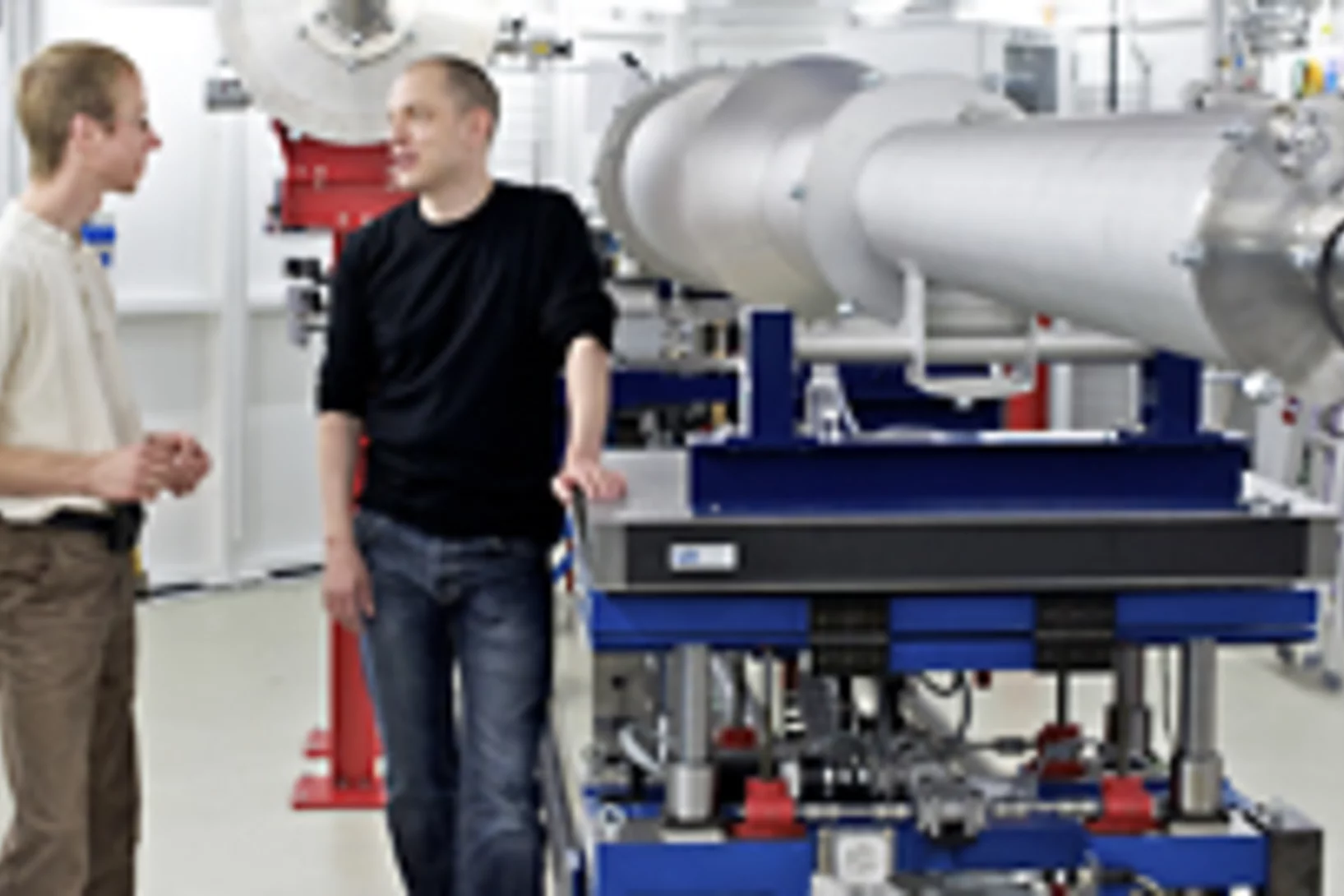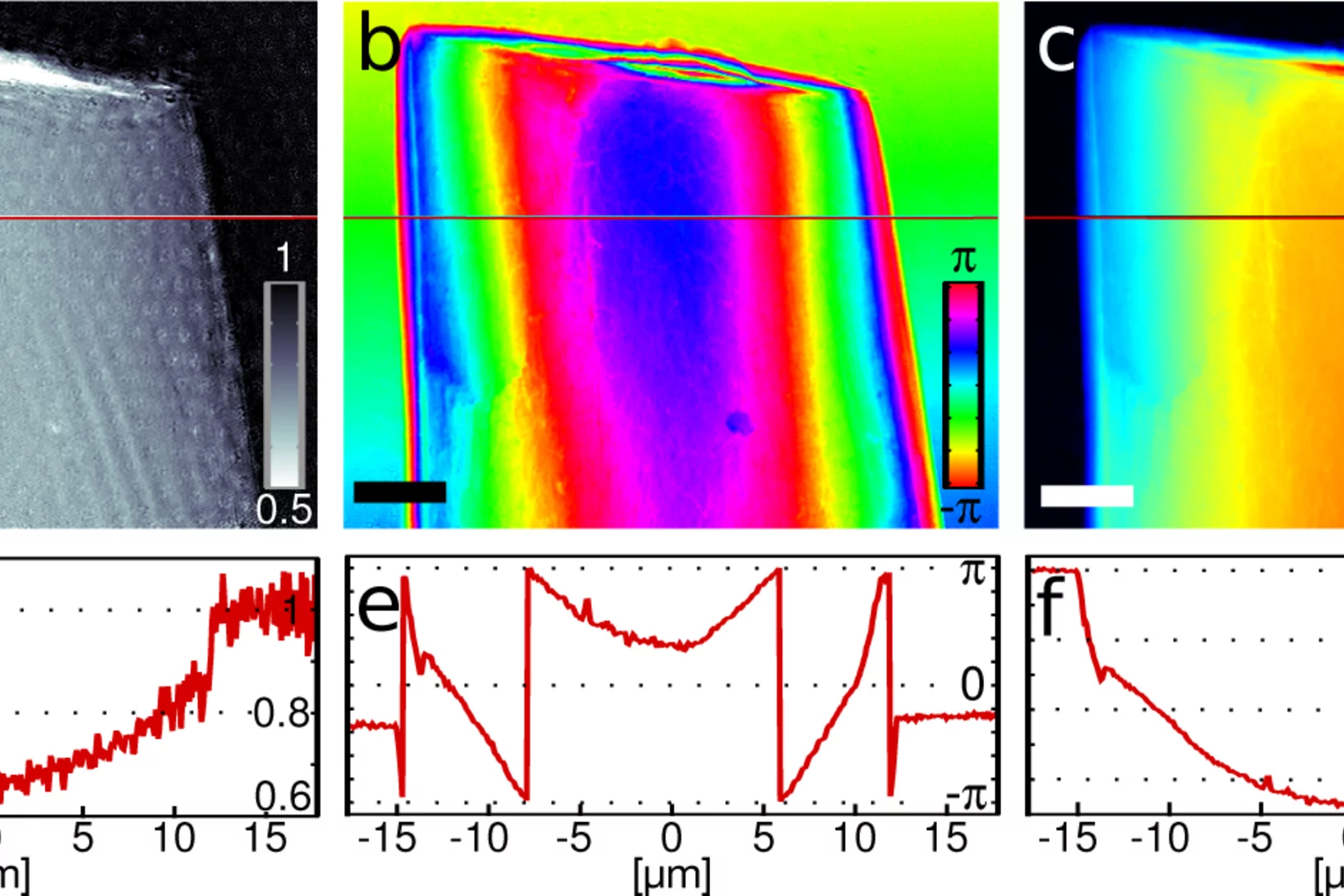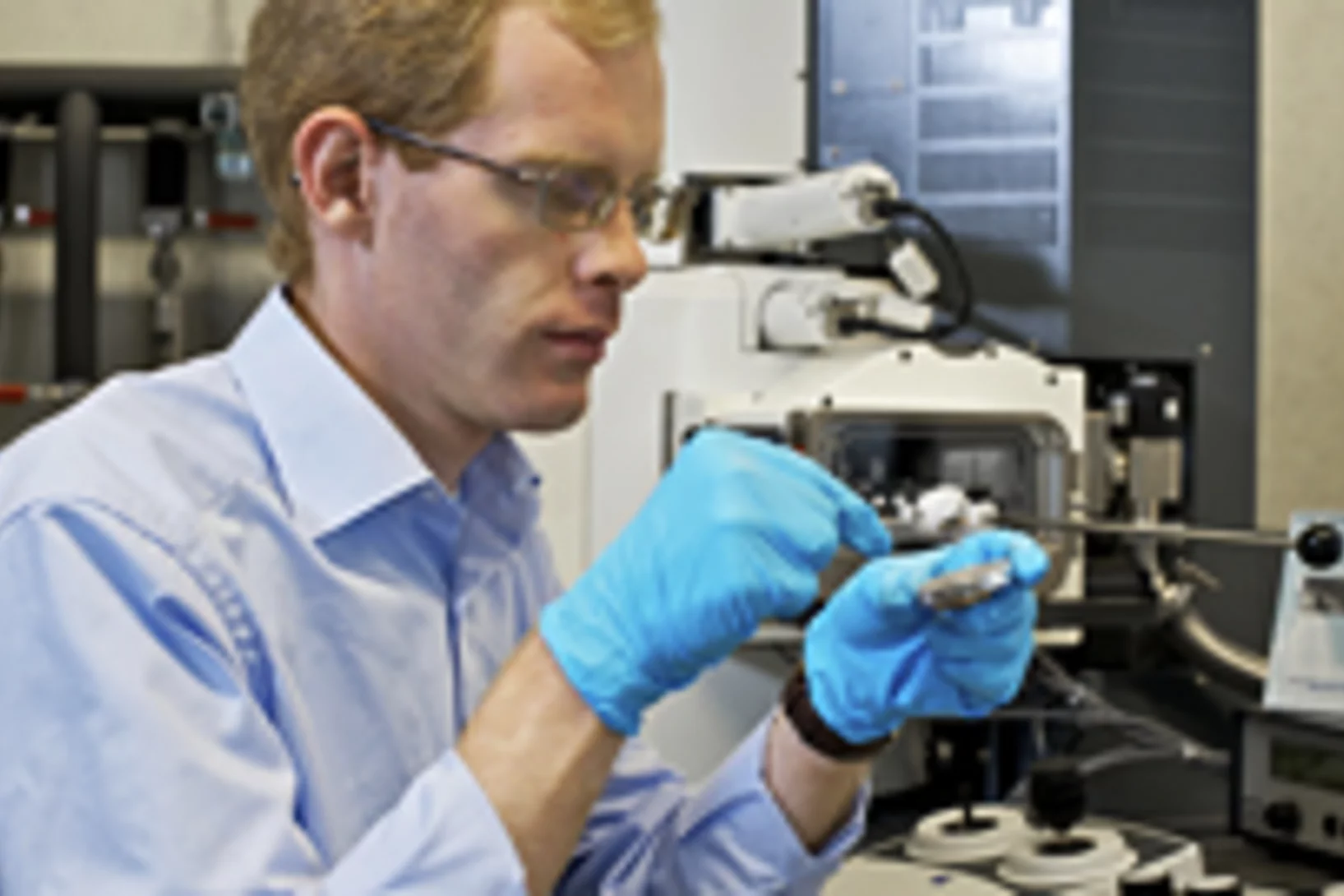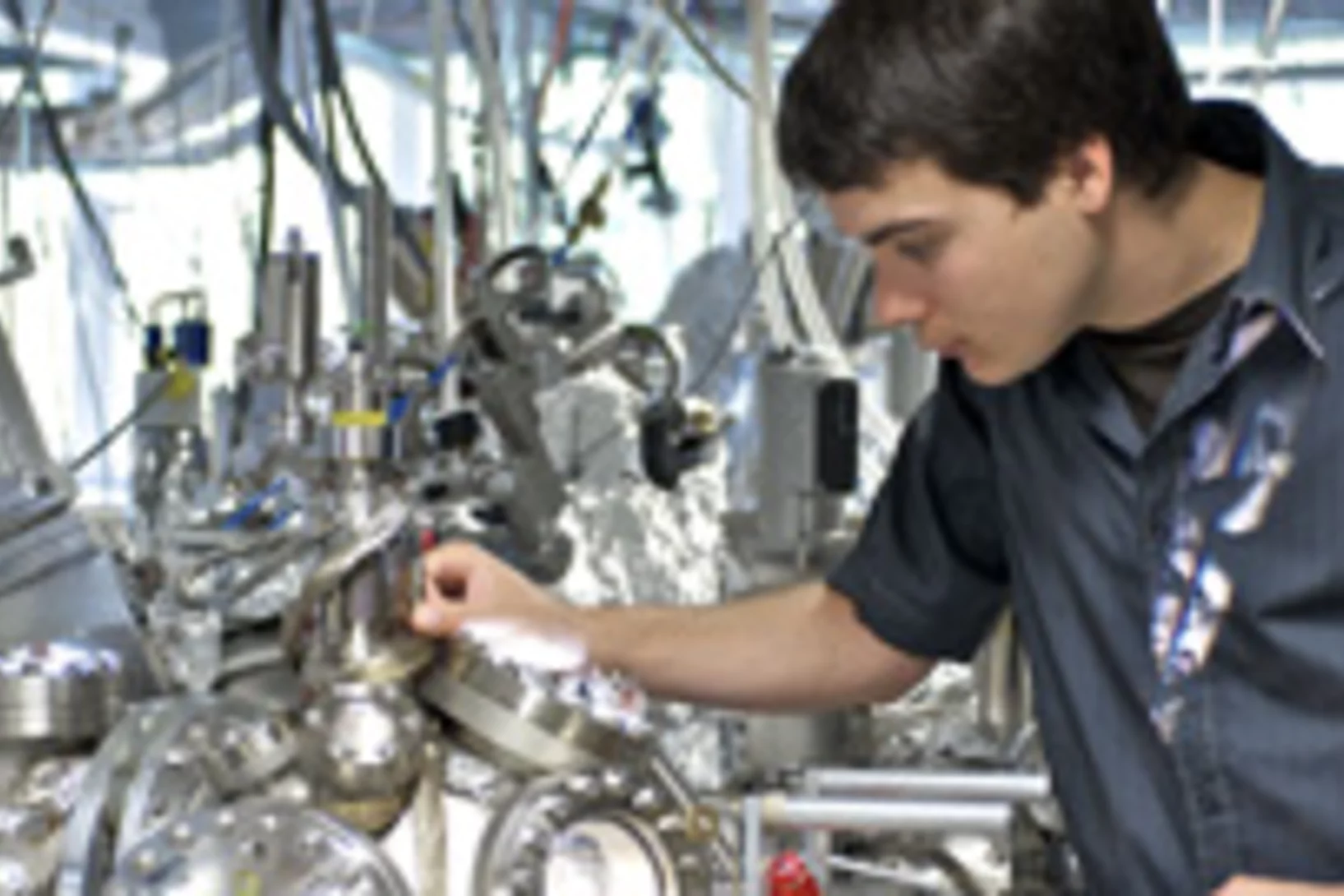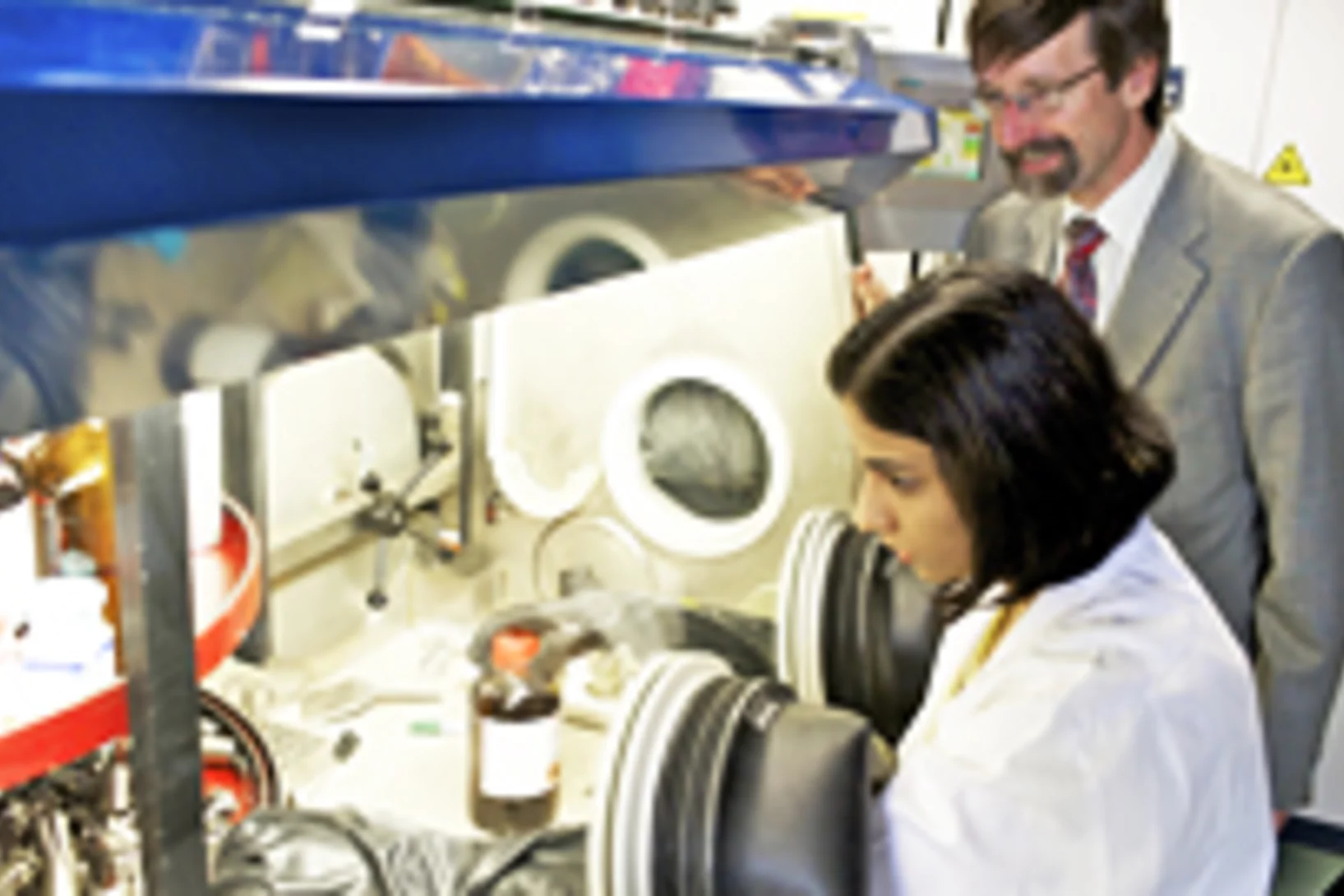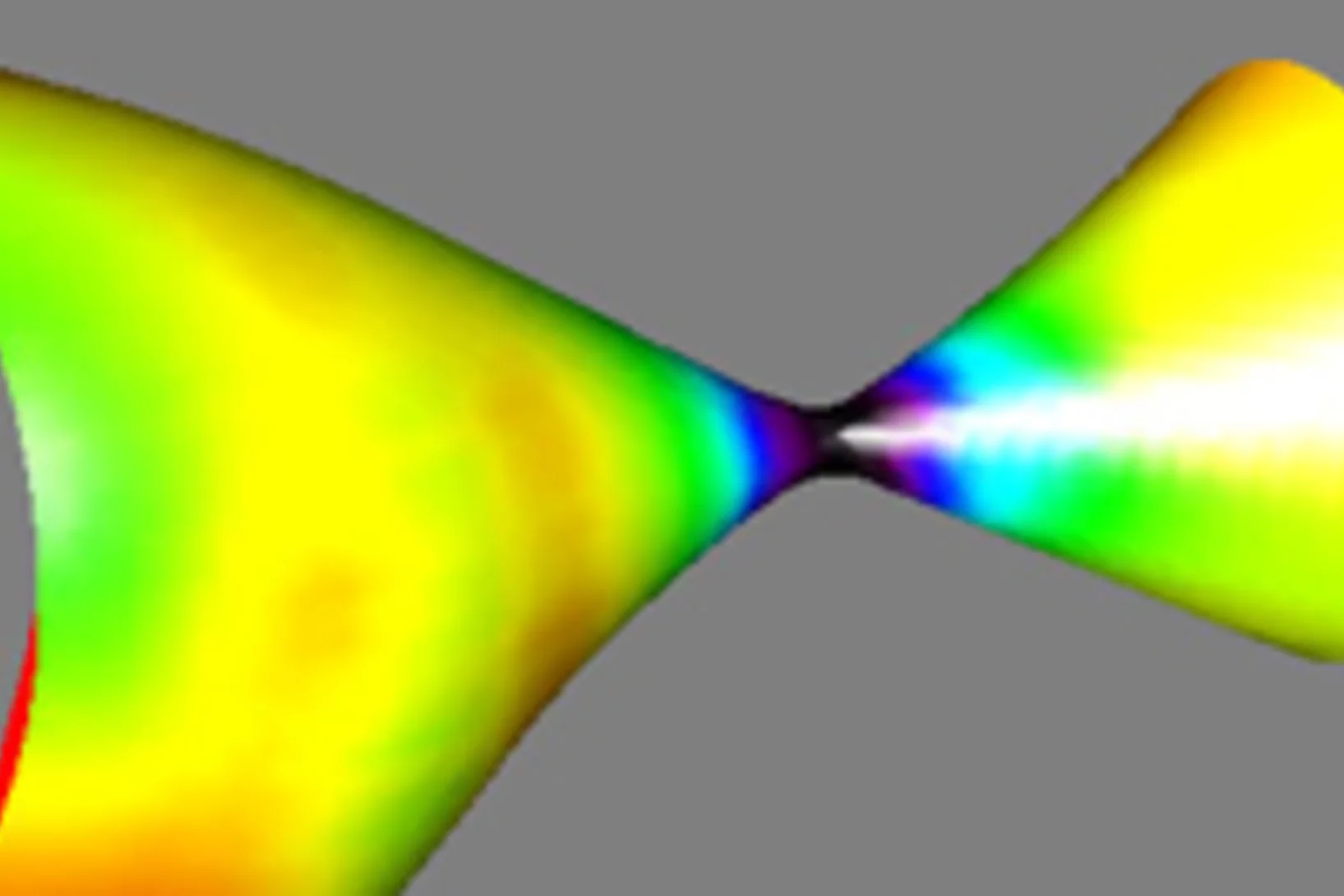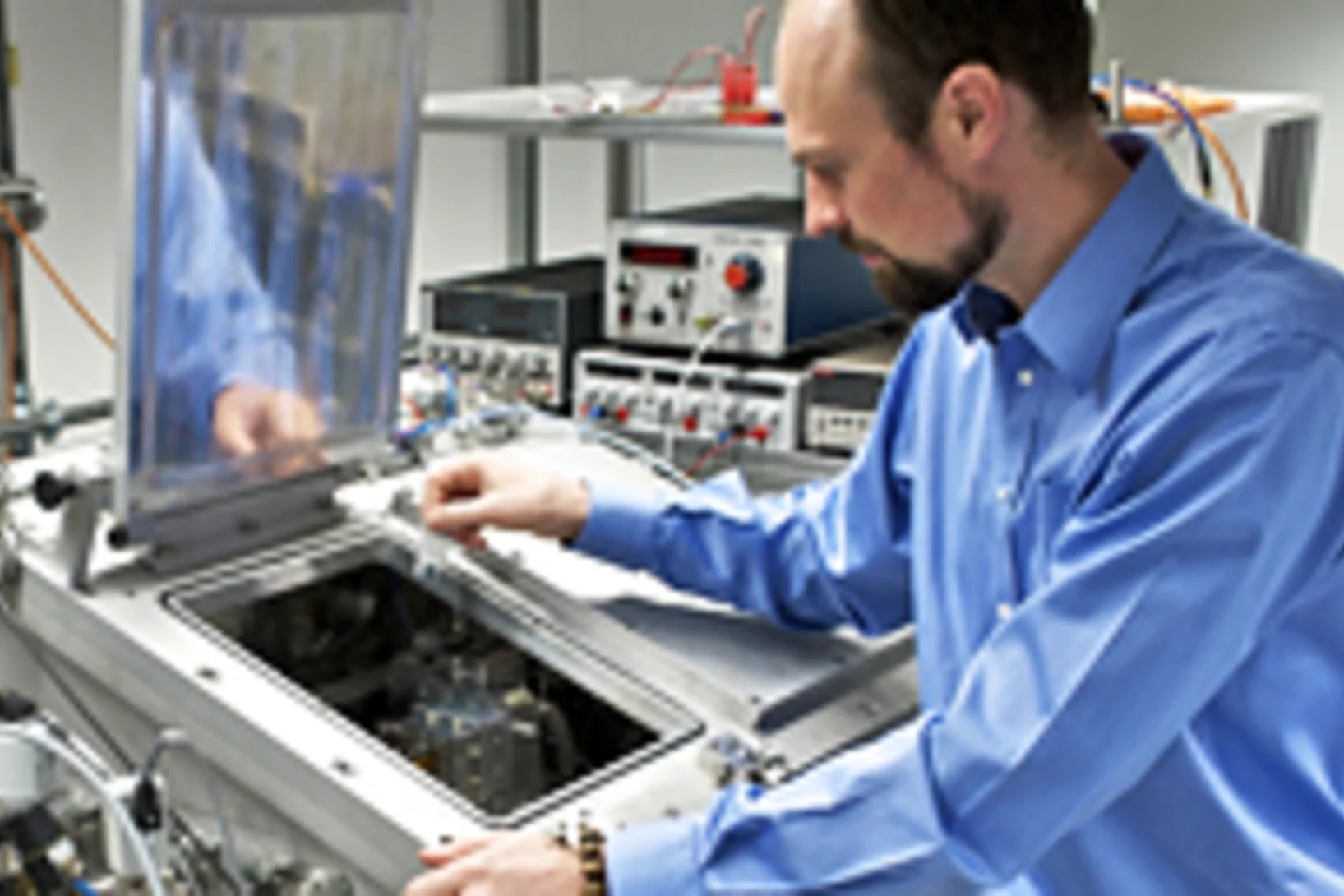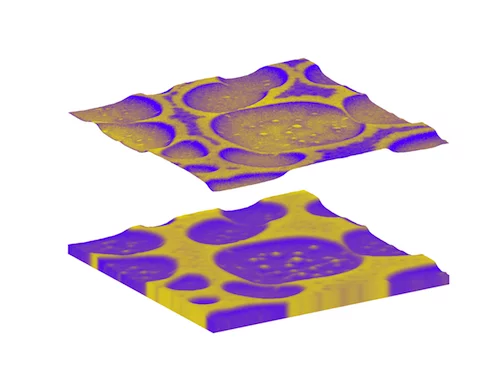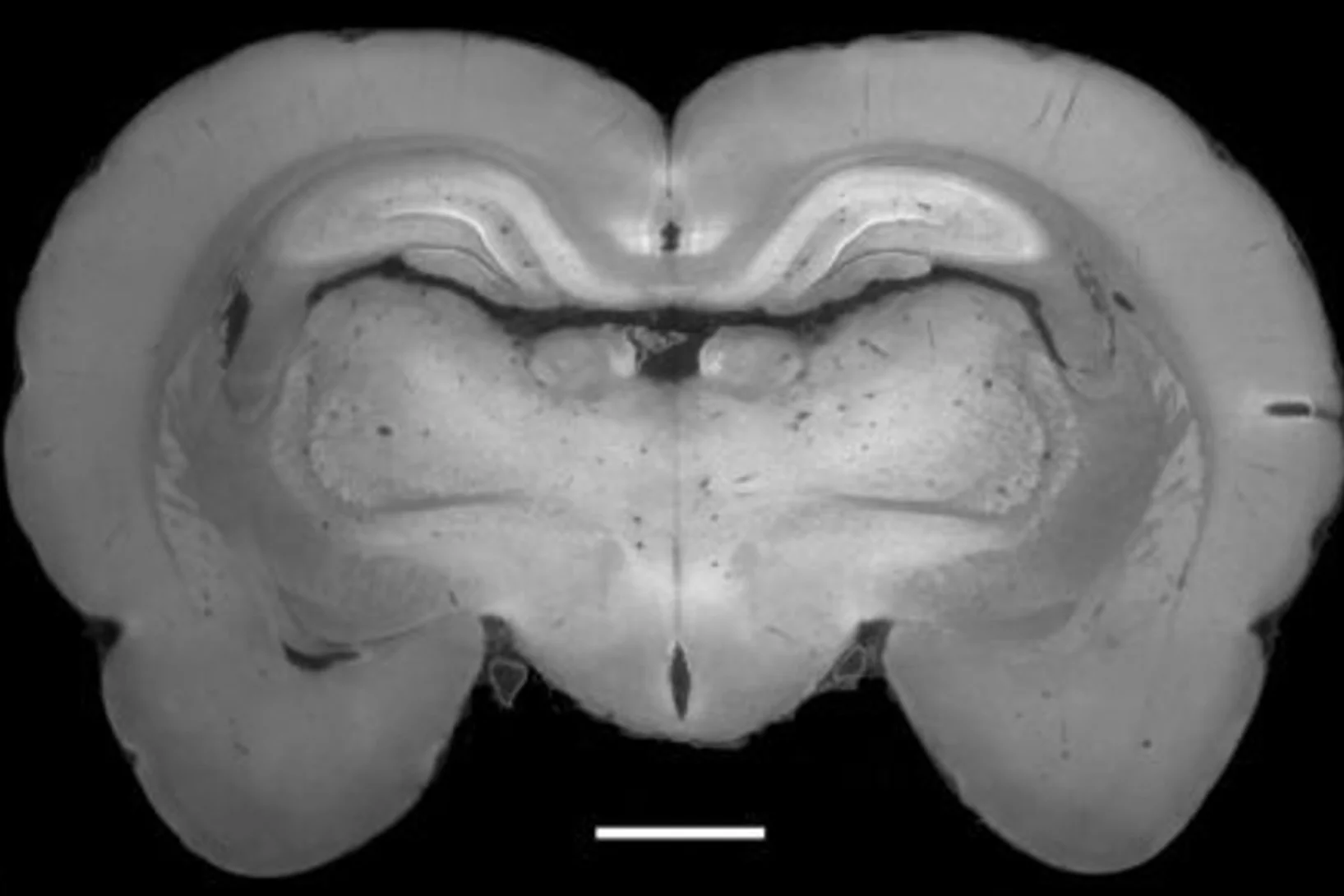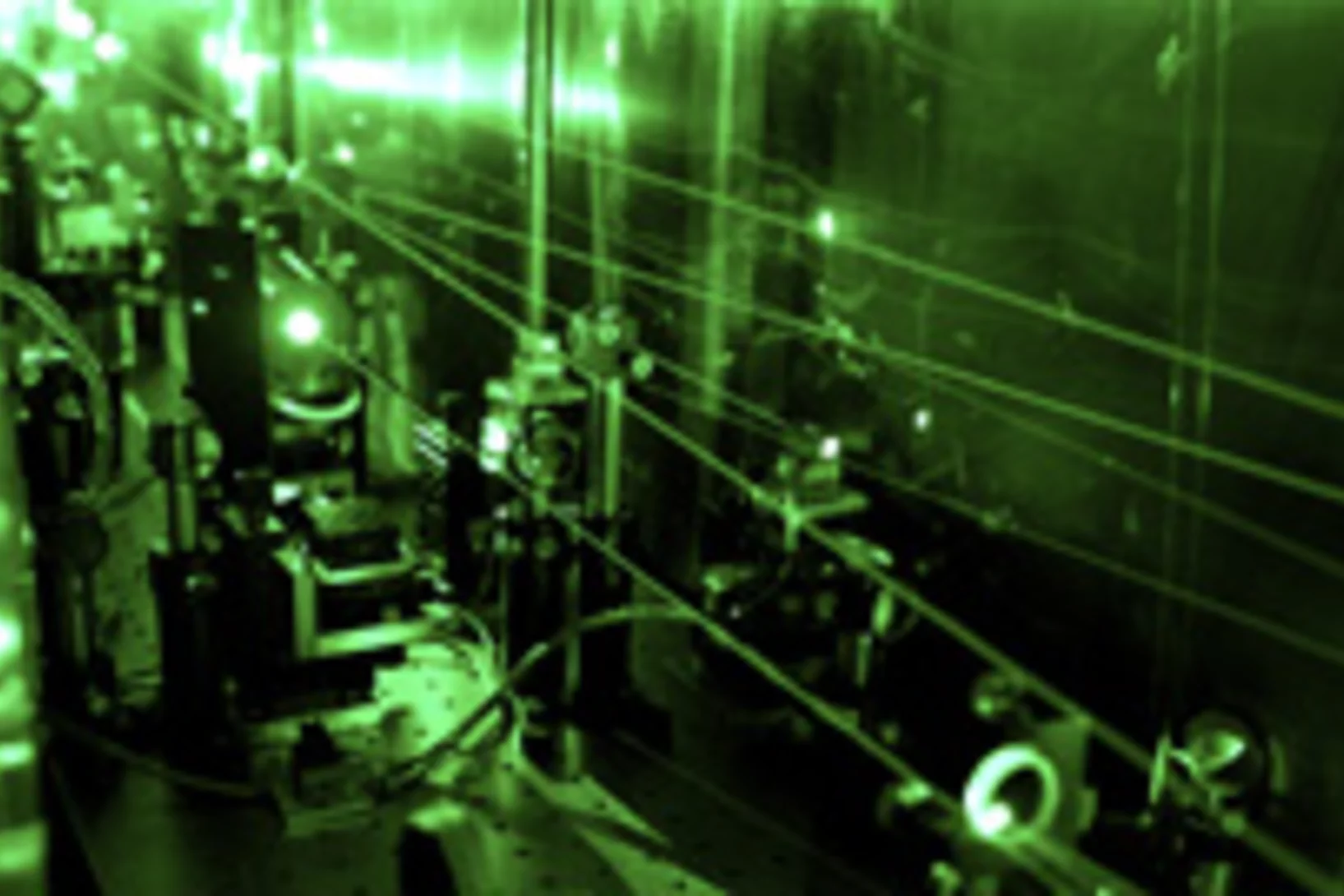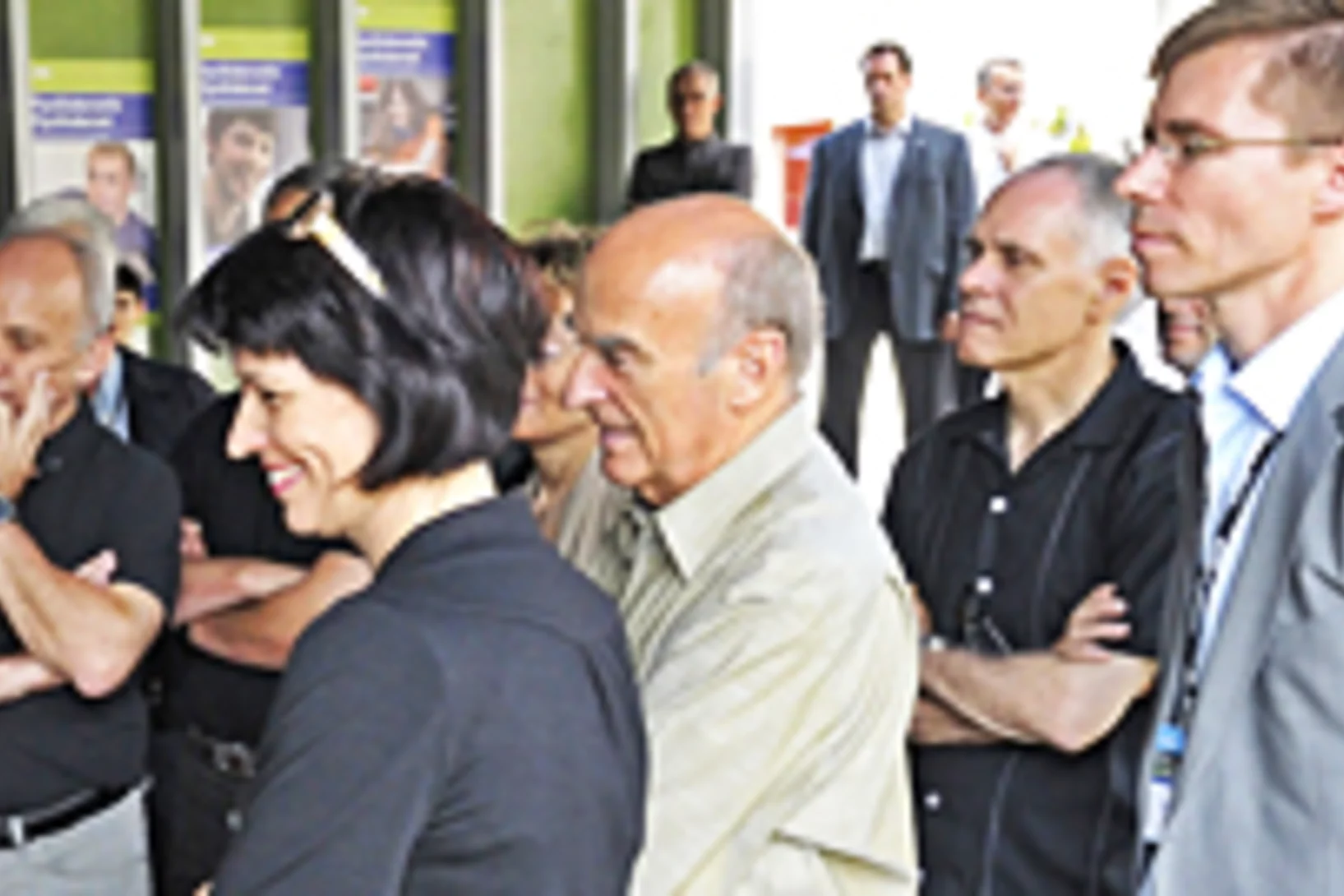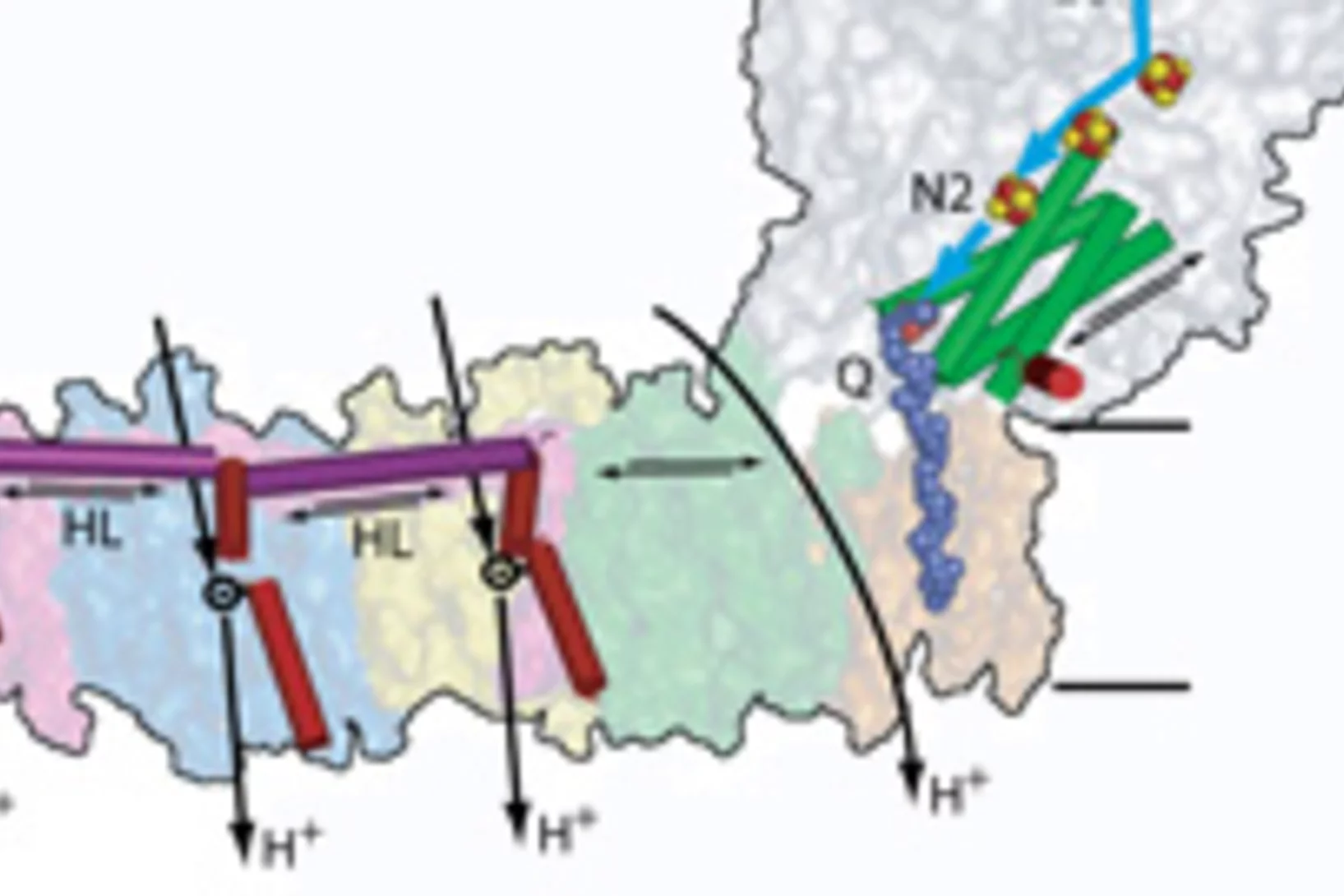At PSI, several projects are dedicated to important research questions concerning the Sars-CoV-2 coronavirus and the resulting diseases. We provide information on activities and projects, for example on investigations of lung tissue, on the production of proteins and antibodies or on ideas for new research on Covid-19.
Useful links
How strong is the weak force?
A new measurement of the muon lifetime à the most precise determination of any lifetime à provides a high-accuracy value for a crucial parameter determining the strength of weak nuclear force. The experiments were performed by an international research team at the accelerator facility of the Paul Scherrer Institute.
LaAlO3 - Buckling under pressure to hand over the charges
In this paper, we report on the change in the atomic structure of the conducting interface between the insulators LaAlO3 and SrTiO3 as a function of the LaAlO3 layer thickness. We discovered that the atoms at the interface buckle in an attempt to counteract the internal electric field produced when these two insulators touch one another.
Understanding the nanomachines of life
Ribosomes are the protein factories of the living cell and themselves very complex biomolecules. Now, a French research group has for the first time determined the structure of the ribosome in a eukaryotic cell à a complex cell containing a cell nucleus. An important part of the experiments was performed with synchrotron light at the Swiss Light Source SLS of the Paul Scherrer Institute.
Observation of a ubiquitous three-dimensional superconducting gap function in optimally doped Ba0.6K0.4Fe2As2
The iron-pnictide superconductors have a layered structureformed by stacks of FeAs planes from which the superconductivity originates. Given the multiband and quasi three-dimensional1 (3D) electronic structure of these high-temperature superconductors, knowledge of the quasi-3D superconducting (SC) gap is essential for understanding the superconducting mechanism.
Potenzial einer kostengünstigen Brennstoffzelle für Autos aufgezeigt
Das Paul Scherrer Institut PSI und die Belenos Clean Power AG haben ein Brennstoffzellensystem entwickelt, das das Potenzial aufweist, kostengünstig in einen Kleinwagen eingebaut zu werden, der dann über seine Lebenszeit ähnlich viel kosten würde wie ein herkömmliches Auto. Für diesen wichtigen Schritt in Richtung umweltfreundliche Mobilität erhalten PSI und Belenos den Watt d’Or 2011.This news release is only available in French and German.
Benzin aus Wasser, CO2 und Sonnenlicht
Einem Forschungsteam um Aldo Steinfeld ist es gelungen, mit Solarenergie aus Wasser und Kohlendioxid Treibstoff zu erzeugen. Dazu haben die Wissenschaftler einen Solar-Reaktor entwickelt, in dem konzentrierte Sonnenstrahlung das dafür nötige thermochemische Verfahren antreibt.This news release is only available in German.
In the future: processing and memory on a single chip
Researchers have shown that a magnetically polarised current can be manipulated by electric fields. This important discovery opens up the prospect of simultaneously processing and storing data on electrons held in the molecular structure of computer chips à combining computer memory and processing power on the same chip. This may allow for the development of new devices with high power efficiency and reduced weight.
Röntgenpreis for X-Ray research goes to Christian David
On 26th November 2010, Christian David, scientist at the Laboratory for Micro and Nanotechnology, received the Röntgenpreis for research in radiation science. David pioneered a method to enhance the quality of X-ray images. He received the award jointly with Franz Pfeiffer from Technische Universität München who worked closely together with him.
The award
Magnetisierte Bereiche in 3D sichtbar gemacht
Magnetisierbare Materialien sind nie völlig unmagnetisch, sondern enthalten immer magnetisierte Bereiche à die magnetischen Domänen. In einem Experiment am Helmholtz-Zentrum Berlin (HZB) konnten diese Domänen erstmals in ihrer dreidimensionalen Struktur abgebildet werden. Der Versuch beruhte auf einer Weiterentwicklung eines am Paul Scherrer Institut entstanden Verfahrens und nutzte neutronenoptische Komponenten, die am PSI hergestellt worden sind.This news release is only available in German.
Effizienter Gentransfer nun auch in Säugerzellen möglich
Wissenschaftler am Paul Scherrer Institut entwickelten ein neues Verfahren, das auch zur Entwicklung von neuen Medikamenten genutzt werden kann.Die Gentechnik ist aus der modernen Biologie nicht mehr wegzudenken. Sie liefert Werkzeuge, mit denen Forscher Gene aus dem Erbgut von Zellen herausschneiden, verändern und einfügen können. Die stabile Einführung mehrerer Gene in Säugetierzellen gilt zwar als Schlüsseltechnologie, die verfügbaren Methoden waren bislang aber äusserst ineffizient. Wissenschaftler am PSI haben nun eine neuartige Technik entwickelt.This news release is only available in German.
What the “hairy ball theorem” tells us about flux lines in superconductors
In strong magnetic fields, type II superconductors tend to form flux lines à thin channels through which the magnetic field can pass through the superconductor. Usually, these flux lines tend to form regular patterns. Now, two physicists have shown that such a pattern must depend on the direction of the external magnetic field. These results are based on a mathematical principle known as the Hairy ball theorem.
Direct Determination of Large Spin-Torque Nonadiabaticity in Vortex Core Dynamics
We use a pump-probe photoemission electron microscopy technique to image the displacement of
vortex cores in Permalloy discs due to the spin-torque effect during current pulse injection. Exploiting the
distinctly different symmetries of the spin torques and the Oersted-field torque with respect to the vortex
spin structure we determine the torques unambiguously, and we quantify the amplitude of the strongly
Moving Monopoles Caught on Camera
For decades researchers have searched for magnetic monopoles à isolated magnetic charges that can move freely like electric charges. Now a team of researchers from the Paul Scherrer Institute and University College Dublin have been able to produce monopoles in the form of quasiparticles in an assembly of nanoscale magnets and have directly observed how they move.
Moving Monopoles Caught on Camera - researchers make visible the movement of monopoles in an assembly of nanomagnets
For decades, researchers have been searching for magnetic monopoles; isolated magnetic charges, which can move around freely in the same way as electrical charges – since magnetic poles normally only occur in pairs.
25 Jahre erfolgreiche Behandlung von Augentumoren am PSI
Heute haben die Physiker und Ärzte des PSI diesen Erfolg mit einem Festsymposium gefeiert. In Anwesenheit von geladenen Gästen aus Forschung, Medizin und Politik wurde dabei auch die brandneue Behandlungsanlage OPTIS 2 eingeweiht. Diese Bestrahlungseinrichtung befindet sich nicht nur technisch auf dem allerneusten Stand, sondern überzeugt auch durch ihre Patientenfreundlichkeit.This news release is only available in German.
High-resolution method for computed nano-tomography developed
High-resolution method for computed nano-tomography developedA novel nano-tomography method developed by a team of researchers from the Technische Universität München, the Paul Scherrer Institute and the ETH Zurich opens the door to computed tomography examinations of minute structures at nanometer resolutions. The new method makes possible, for example, three-dimensional internal imaging of fragile bone structures.
High-resolution method for computed nano-tomography developed
A novel nano-tomography method developed by a team of researchers from the Technische Universität München (TUM), the Paul Scherrer Institute (PSI) and the ETH Zurich opens the door to computed tomography examinations of minute structures at nanometer resolutions. The new method makes possible, for example, three-dimensional internal imaging of fragile bone structures. The first nano-CT images generated with this procedure was published in the renowned journal Nature on September 23, 2010.
Die Batterie der Zukunft hält länger
Der «swisselectric research award 2010» geht an den Chemiker Andreas Hintennach vom Paul Scherrer Institut. Dank seiner Forschung könnten Lithiumionen-Batterien in Zukunft deutlich langlebiger werden. Das Speichern von Strom wird somit umweltfreundlicher und kostengünstiger.This news release is only available in German.
Paul Scherrer Institut erhält hohen Besuch aus Politik und Wirtschaft
Das Kernstück der neuen Grossforschungsanlage SwissFEL ging heute am Paul Scherrer Institut wie geplant in Betrieb. Ehrengast Bundesrat Didier Burkhalter drückte auf den roten Knopf, und die Anlage produzierte den ersten Elektronenstrahl.This news release is only available in French and German.
A possible new career for a vital biomolecule
As a component of the haemoglobin molecule, porphyrin enables the transport of oxygen within the human body. In a slightly altered form, it may find also applications in technical devices. Researchers at the Paul Scherrer Institute and the University of Basel have shown that a magnetic property of the molecule can be switched on and off by means of a simple chemical procedure, so that the molecule can be used as a tiny molecular switch.
Gemeinsam forschen für bessere Batterien
Die Speicherung von elektrischer Energie ist eine der zentralen Fragen der Energiezukunft. Neue Batterietypen zu entwickeln, die mehr Energie speichern können als die heute verfügbaren, ist das Ziel eines Forschungsnetzwerks, das der weltweit grösste Chemiekonzern BASF gemeinsam mit dem Paul Scherrer Institut PSI und Forschungseinrichtungen aus Deutschland und Israel gegründet hat.This news release is only available in German.
Researchers Find Universal Law For Material Evolution
Many important materials are composed of several phases. When such a material is heated, atoms move from one phase to another, which changes the distribution of the phases à and thus, the properties of the material. A team of researchers has now shown that for an important case, there is a general law describing this process that is valid for all classes of materials.
Understanding plastic semiconductors better
Semiconductors made from polymer materials are becoming increasingly important for the electronics industry à as a basis for transistors, solar cells or LEDs. Usually, they consist of more than one substance as they get their particular electric properties only when several materials are blended. Researchers from the Paul Scherrer Institute and the University of Cambridge have developed a method that allows them to determine the detailed structure of the material.
Understanding plastic semiconductors better
New method allows important insights into polymer semiconductors
Semiconductors made from polymer materials are becoming increasingly important for the electronics industry – as a basis for transistors, solar cells or LEDs – showing important advantages when compared to conventional materials: they are lightweight, flexible and very cheap to produce.
New X-ray technique distinguishes between that which previously looked the same
Images generated using the phase-contrast technique allow one to distinguish between tissue types such as muscle, cartilage, tendons or soft-tissue tumours that look virtually identical in conventional X-ray images. Researchers at the Paul Scherrer Institute and the Chinese Academy of Science have further developed the technique to make it easier to use in the future. This could help in the detection of tumours or in the identification of hazardous objects in luggage.
New X-ray technique distinguishes between that which previously looked the same
A new method forms the basis for the widespread use of an X-ray technique which distinguishing types of tissue that normally appear the same in conventional X-ray images
Protons - smaller than we thought
The proton à one of the smallest building-blocks of all matter à is even smaller than had previously been assumed. This discovery is the result of experiments carried out at the Paul Scherrer Institute (PSI) in Villigen, Switzerland, by an international research team.
Paul Scherrer Institut ermöglicht bessere Versorgung der Spitäler mit hochwirksamem Krebsmedikament
Das Paul Scherrer Institut ist für die Behandlung von bestimmten Krebserkrankungen mittels seiner einzigartigen Protonentherapie-Anlage bekannt. Nun hilft das PSI auch bei der Behandlung einer Gruppe von Krebspatienten durch die Herstellung eines Krebsmedikaments. Die erste Patientendosis wurde heute am Zentrum für Radiopharmazeutische Wissenschaften des PSI hergestellt und im Kantonsspital Luzern einem Patienten verabreicht.This news release is only available in German.
Gesamtbundesrat zu Besuch am Paul Scherrer Institut
Der traditionelle Jahresausflug des Bundesrats hat dieses Jahr in die Heimat von Bundespräsidentin Doris Leuthard, in den Aargau, geführt. Mit ihren Ratskolleginnen und Ratskollegen sowie der Bundeskanzlerin und den beiden Vizekanzlern besuchte die Bundespräsidentin am Freitag, 2.Juli 2010 als erste Station das Paul Scherrer Institut, das grösste Forschungsinstitut der Schweiz.This news release is only available in German.
Proton pump generates energy from food and oxygen
A central feature of any living organism is that food reacts with oxygen and, in the process, energy is released and made available for a variety of reactions within the organism. Using investigations performed at the Swiss Light Source, SLS, researchers have now been able to explain a crucial part of this process at a molecular level.

